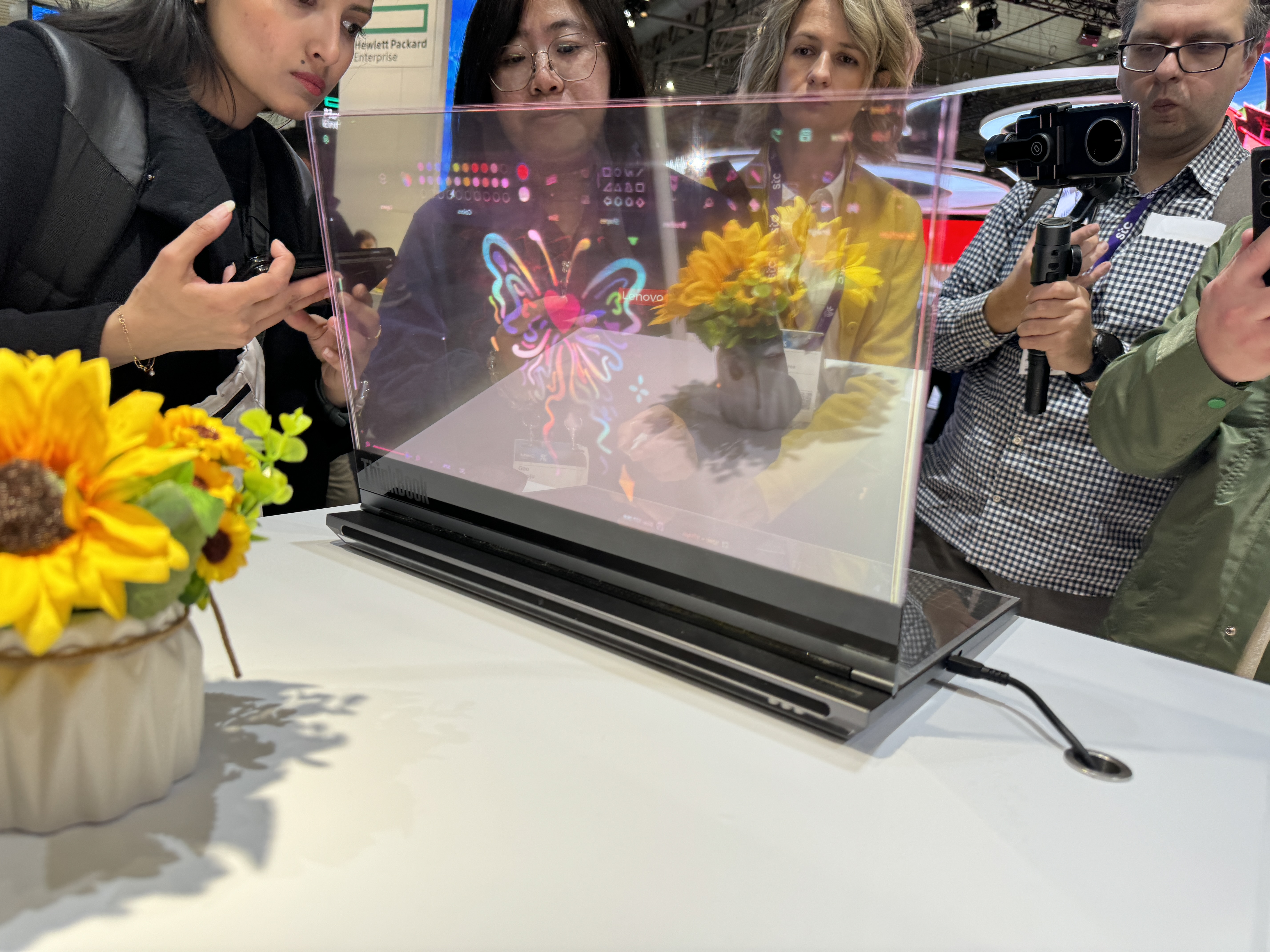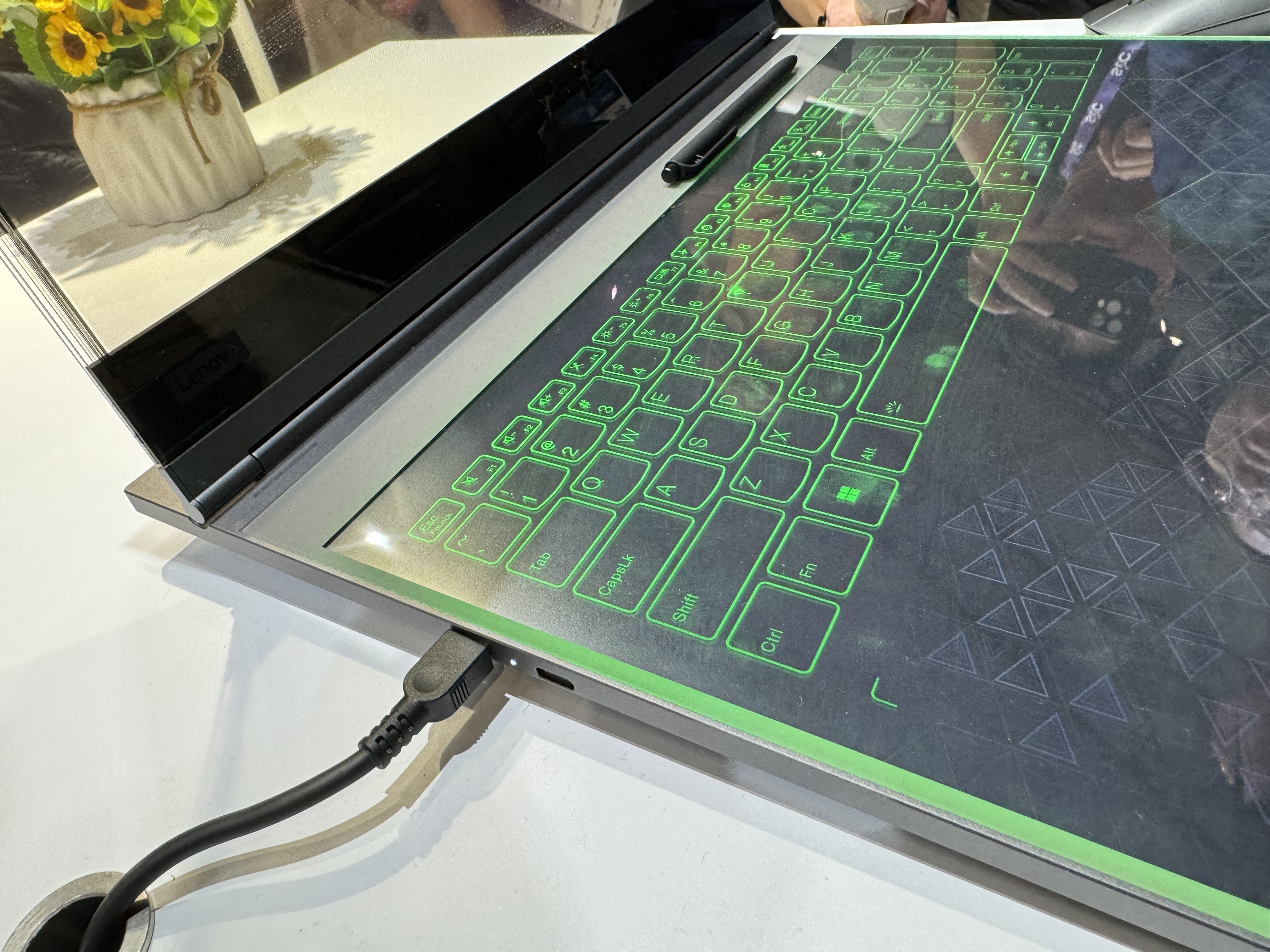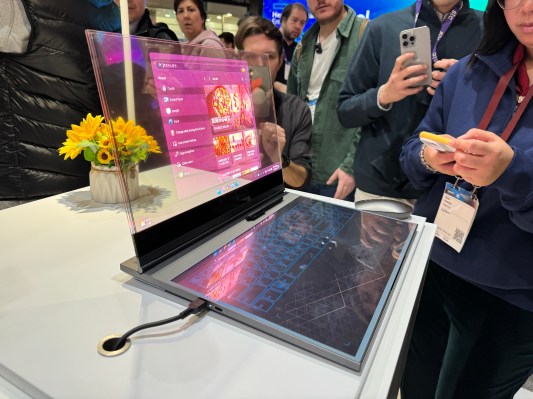Something I’ve always admired about Lenovo is the way the Chinese tech giant really lets its freak flag fly. In fact, visiting the company’s booth nestled in the way, way back of Hall 3 has long been a highlight of MWC for me. You can always tell where the latest bit of weirdness is located by the gaggle of people shooting smartphone video of the thing.
This year’s big scrum gatherer was Lenovo’s long-rumored transparent laptop. It’s real. It functions surprisingly well and — nearest anyone can tell — its existence is a testament to form over function. That’s a perfectly fine thing to be when you’re a concept device. When it comes to actually shipping a product, however, that’s another conversation entirely.

Image Credits: Brian Heater
I’ll be the first to admit that it’s difficult to photograph the thing — especially on a crowded show floor with a few dozen folks elbowing their way in to catch a glimpse of it it. Broadly speaking, it looks like a laptop, with a transparent pane where the screen should be. It’s perhaps best understood as a kind of augmented reality device, in the sense that its graphics are overlaid on whatever happens to be behind it.
It’s a crowd pleaser, with a futuristic air to it that embodies all manner of sci-fi tech tropes. The transparent display has become a kind of shorthand for future tech in stock art, and it’s undeniably neat to see the thing in action. It’s not the first time we’ve seen the technology, though until now it’s been relegated to television screens. The technology makes a bit more sense in that form factor, however, as it can be deployed in public places like hotel lobbies, or as a kind of signage.

Image Credits: Brian Heater
I’m racking my brain to come up with a practical real-world use for such a product that goes beyond looks. When I think about working on my laptop, more often than not, I’m facing a wall. On occasion, I’m facing a window, with light streaming in. I’m curious how the thing does in full daylight. A max of 1,000 is admittedly quite bright, but it’s hard to say how it will handle direct sunlight.
I’m currently writing this in the MWC media lounge. It’s not a wall or direct sunlight, but the view in front of my MacBook is just some dude’s ThinkPad. I don’t know that transparency would add much in this instance. Also, he would be able to see me through it — the rear of the device offers up a mirror image of the display’s front.

Image Credits: Brian Heater
The bottom of the device is covered in a large capacitive touch surface. This area serves as both a keyboard and a large stylus-compatible drawing surface. The flat surface can’t compete with real, tactile keyboards, of course. Typing isn’t the greatest experience here, as evidenced by previous dual-screen Lenovo laptops. But that’s the trade-off for the versatility of the virtual version.
At the moment, it seems unlikely that the concept will ever make the jump to productization. Lenovo loves making weird tech for weird tech’s sake, and that’s totally fine. That said, the company has also brought its share of weird products to market. Take the recent example of the X1 Fold. Stranger things have happened.

